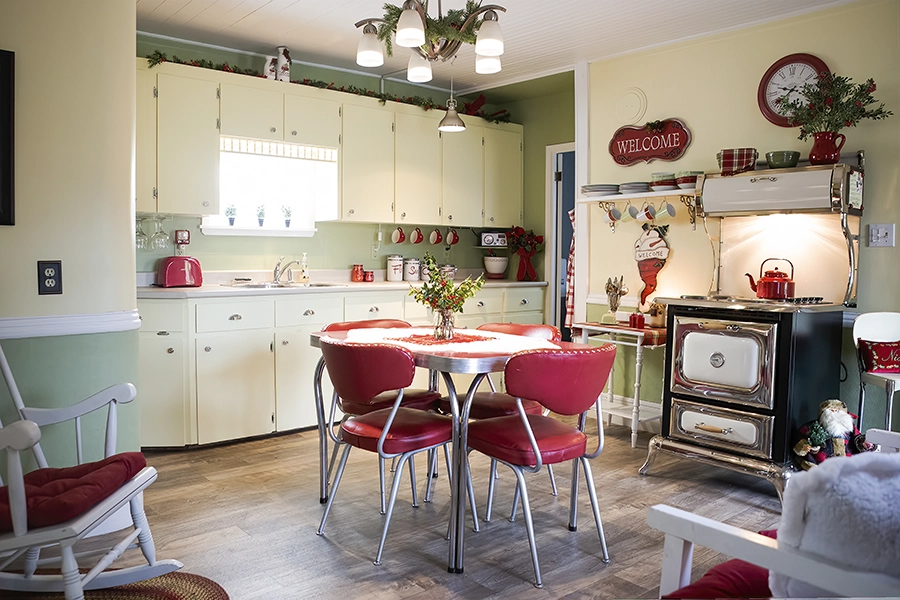Recipes Featured In This Article
Caramelized Fennel, Squash and Maple Sausage Pizza
*Online exclusive* You can substitute sweet onion for the fennel, if you prefer. Remember ...
Spinach Salad
This is the perfect accompaniment for any pizza, as it provides texture and taste contrast...
Pizza Pesto
An alternative to tomato sauce for your favourite pizza....
Mushroom Pizza
The secret to this pizza is roasting a combination of your favourite mushrooms and mixing ...
White Pizza
So named as there’s no tomato sauce, the addition of a honey balsamic vinegar reduction ...
Four Cheese Pizza
Attention serious cheese lovers: you’ll find feta, smoked provolone, mozzarella, and Swi...
Tyson’s Tomato Sauce
A quick and traditional Italian-style tomato sauce, perfect for bringing out the sweet and...
Roasted Red Pepper and Kalamata Olive Pizza
Jennifer discovered this family favourite and adapted it over the years....
Easy Pizza Dough
The secret to great pizza dough is letting it rest long enough for the yeast to feed on th...
Tyson Wachter takes pizza very seriously. As chef at Mother’s Pizza in Halifax, he creates and eats pizza every day, but never tires of it. He says it’s in his blood as his grandfather was a baker. “He had a phenomenal garden,” he says. “I grew up with fresh ingredients and baking.”
Wachter, who is originally from Ontario, studied under a Northern Italian chef in Toronto and made pizzas in the tropical islands of Turks and Caicos. “Making pizza there was super interesting. We did a lot of slices and we used local ingredients such as lionfish and conch.”
In 2013 Wachter brought his pizzas to North End Halifax where his imaginative menu includes classic Pepperoni, the Pork Shoulder, and the Kitchen Sink, a pizza topped with, salami, thuringer sausage, zucchini, mushrooms, onion, mozzarella, and Mother’s classic tomato sauce.
Wachter will happily devour all of Mother’s pizzas, but given the choice at the end of a long day, he prefers his flavourful Four Cheese Pizza, with the addition of spinach and hot peppers. His bestseller is a delicious White Pizza without tomato sauce. He adorns it with chorizo sausage, mozzarella, and smoked provolone cheese; a honey balsamic reduction and chopped walnuts make it special. He likes a thinner crust but says local tastes demand something closer to medium.
Wachter uses a living sourdough although he suggests a basic dough for the home chef. Making dough is easier than many think. “With a little bit of practice you’ll get to know its consistency and will be able to make it without a recipe,” he says. Be sure the yeast and flour aren’t too old so that the dough rises properly. And forget store-bought sauces: a homemade sauce with just a few ingredients is always best.
Wachter says pizza is perfect for making at home because everyone has their own tastes. “People say they like this, or don’t like that,” he says. “I think a lot of what we like has to do with food memories.”
Unlike Wachter who’s made pizza his vocation, University of Prince Edward Island nutrition professor Jennifer Taylor of Cornwall, often makes pizza for fun. “I love to cook,” she says. “That’s the way I show my friends and family I love them.” Taylor makes pizza almost every week with different toppings to suit the tastes of family and friends.
“Pizzas can be really nutritious,” she says, “It’s all in what you put on them.” She recommends using half white and half whole-wheat flour and quality meats, such as local sausage, in small amounts. The same applies to cheese. High-fat cheese melts best, so just use less. Taylor grates her cheese over the pizza before adding everything else to prevent the sauce from soaking into the crust.
Her current favourite is Caramelized Fennel, Squash, and Maple Sausage Pizza (visit our website for the recipe). “The sweet, smooth squash and the savoury sausage are all brought together with a pungent, nutty sage and parsley pesto,” she says. A rich vegetarian pizza, Roasted Red Pepper and Kalamata Olive, is her husband’s favourite. “The naturally sweet silky peppers are a perfect match for the briny olives,” adds Taylor.
Pizza stones are a great way to make your pizzas at home. Place a layer of cornmeal on the stone first, for added crunch and to slide your pizza from the stone, or use parchment paper which is less messy. Cook your pizza quickly at 450°F or 500°F (232°C or 260°C). And a big wooden paddle, or peel, like those used in pizzerias, is a must for the true pizza connoisseur.
In summer Taylor tosses her pizzas on the barbecue. “For days that are humid and hot, it doesn’t heat up your house. And the barbecue gives a nice flavour.” Perhaps most important is the entertainment value. “It’s fun and people enjoy it,” says Taylor. “If I’m having a crowd I will pre-cook three crusts and the guests will help dress how they want it.” For her 89-year-old mother, that means garlic shrimp.
Wachter says pizza on the barbecue makes perfect sense since the physics of a barbecue are not that different than a pizza oven. He suggests cooking the dough lightly first before adding the toppings.
“As with any cooking, the final product is only as good as its ingredients,” he says. “Use great ingredients and enjoy yourself. Happy people make good pizza.”



















